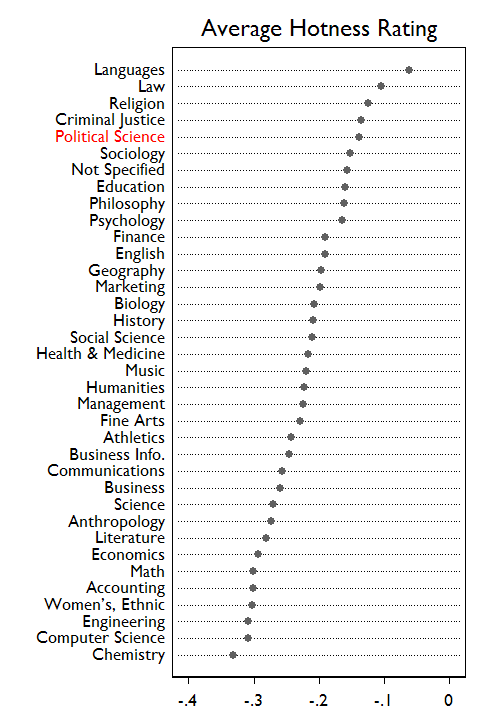So Barack Obama is easily outstripping John McCain both in fundraising and, therefore, in advertising. I’m hardly unique in supporting the source of Obama’s money – a multitude of small donations. It certainly has a more democratic flavour than exclusive fund-raising dinners at $20,000 per plate.
But if we want to look for a cloud behind all that silver lining, here it is: If Barack Obama wins the 2008 US presidential election, Republicans will be in a position to believe (and argue) that he won primarily because of his superior fundraising and not the superiority of his ideas. Even worse, they may be right, thanks to the presence of repetition-induced persuasion bias.
Peter DeMarzo, Dimitri Vayanos and Jeffrey Zwiebel had a paper published in the August 2003 edition of the Quarterly Journal of Economics titled “Persuasion Bias, Social Influence, and Unidimensional Opinions“. They describe persuasion bias like this:
[C]onsider an individual who reads an article in a newspaper with a well-known political slant. Under full rationality the individual should anticipate that the arguments presented in the article will reect the newspaper’s general political views. Moreover, the individual should have a prior assessment about how strong these arguments are likely to be. Upon reading the article, the individual should update his political beliefs in line with this assessment. In particular, the individual should be swayed toward the newspaper’s views if the arguments presented in the article are stronger than expected, and away from them if the arguments are weaker than expected. On average, however, reading the article should have no effect on the individual’s beliefs.
[This] seems in contrast with casual observation. It seems, in particular, that newspapers do sway readers toward their views, even when these views are publicly known. A natural explanation of this phenomenon, that we pursue in this paper, is that individuals fail to adjust properly for repetitions of information. In the example above, repetition occurs because the article reects the newspaper’s general political views, expressed also in previous articles. An individual who fails to adjust for this repetition (by not discounting appropriately the arguments presented in the article), would be predictably swayed toward the newspaper’s views, and the more so, the more articles he reads. We refer to the failure to adjust properly for information repetitions as persuasion bias, to highlight that this bias is related to persuasive activity.
More generally, the failure to adjust for repetitions can apply not only to information coming from one source over time, but also to information coming from multiple sources connected through a social network. Suppose, for example, that two individuals speak to one another about an issue after having both spoken to a common third party on the issue. Then, if the two conferring individuals do not account for the fact that their counterpart’s opinion is based on some of the same (third party) information as their own opinion, they will double-count the third party’s opinion.
…
Persuasion bias yields a direct explanation for a number of important phenomena. Consider, for example, the issue of airtime in political campaigns and court trials. A political debate without equal time for both sides, or a criminal trial in which the defense was given less time to present its case than the prosecution, would generally be considered biased and unfair. This seems at odds with a rational model. Indeed, listening to a political candidate should, in expectation, have no effect on a rational individual’s opinion, and thus, the candidate’s airtime should not matter. By contrast, under persuasion bias, the repetition of arguments made possible by more airtime can have an effect. Other phenomena that can be readily understood with persuasion bias are marketing, propaganda, and censorship. In all these cases, there seems to be a common notion that repeated exposures to an idea have a greater effect on the listener than a single exposure. More generally, persuasion bias can explain why individuals’ beliefs often seem to evolve in a predictable manner toward the standard, and publicly known, views of groups with which they interact (be they professional, social, political, or geographical groups)—a phenomenon considered indisputable and foundational by most sociologists
[emphasis added]
While this is great for the Democrats in getting Obama to the White House, the charge that Obama won with money and not on his ideas will sting for any Democrat voter who believes they decided on the issues. Worse, though, is that by having the crutch of blaming the Obama campaign’s fundraising for their loss, the Republican party may not seriously think through why they lost on any deeper level. We need the Republicans to get out of the small-minded, socially conservative rut they’ve occupied for the last 12+ years.
is the (natural) log deviation – that is, the percentage deviation – of output from its long-run, full-employment trend and
and
are parameters. Notice that (unlike the original Phillips curve), it is forward looking. There are criticisms of the NKPC, but they are mostly about how it is derived rather than its existence.
